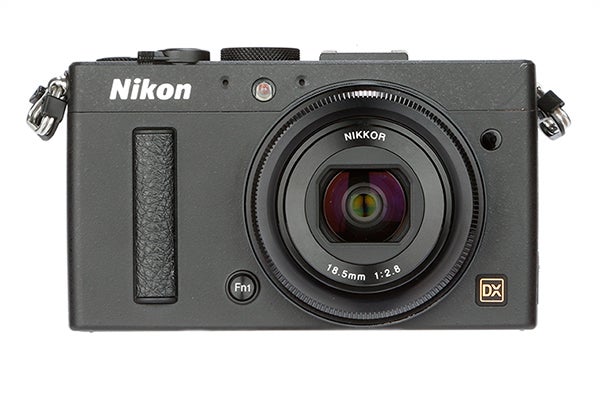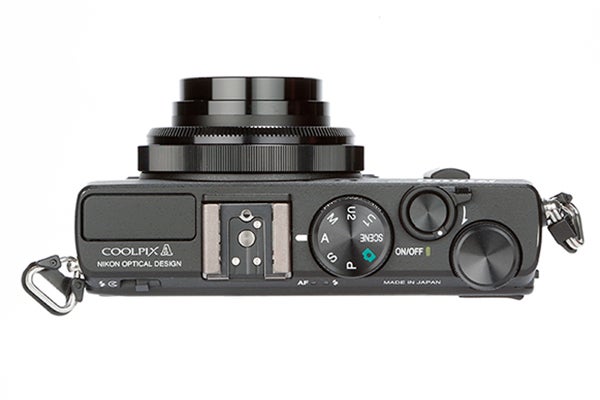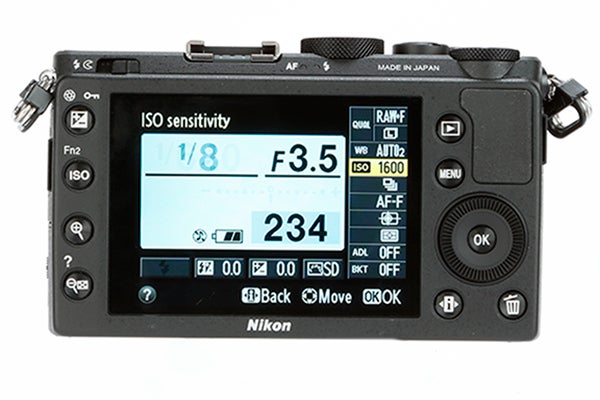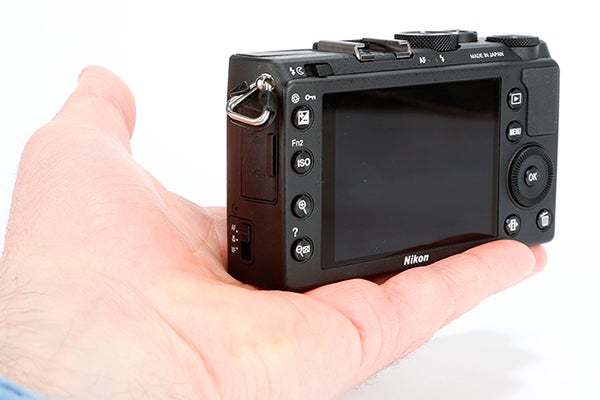Nikon Coolpix A Review - Design & Performance Review
Design & Performance
Is this the best (and priciest) compact camera ever?

Sections
- Page 1 Nikon Coolpix A Review
- Page 2 Design & Performance Review
- Page 3 Image Quality & Verdict Review
Nikon Coolpix A – Design
As you’d expect for a compact camera that’s going to set you back the best part of a four figure sum, Nikon has ensured that the Nikon Coolpix A has a real quality build and feel in the hand. The body incorporates aluminium alloy covers on both the front and the back, while the top plate is constructed from magnesium alloy. These three main composite elements all combine to give the camera a rock-solid feel and one that will no doubt stand up to the odd bump in use.

In terms of more general design, the Nikon Coolpix A bares a lot of similarity to the Nikon Coolpix P310. The Coolpix A is larger than the P310, although this extra bulk has, in general, been put to good use. For example, the model has a much larger top plate, although this extra space is on the whole in order to incorporate the hot shoe for both external flashguns and the range of optional accessories mentioned previously. The top plate also houses the on/off switch, along with a mode dial that is intelligently placed and within easy reach of the thumb whilst shooting.
The rear of the camera is another area where the extra bulk is put to good use. Along the left hand side of the ample LCD screen sits a selection of buttons absent on the Coolpix P310, yet present on the DSLRs the Nikon Coolpix A aspires to match.

Another welcome feature in the design of the Nikon Coolpix A is the focus ring located on the front. This offers responsive control when used in conjunction with the manual focus setting, along with a pleasingly smooth action.
One negative note with regards to the design of the Nikon Coolpix A is the omission of any direct movie record button on the cameras body. This oversight is made worse by the fact that neither of the user-assignable Fn buttons can be selected to access movie recording. As a result you have to access the functionality using the model’s quick menu.
Unfortunately, this makes movie recording a fussy process, and switching back to stills shooting is equally laborious – a pain if you happen to miss a potential shot.
Nikon Coolpix A – Performance
With the high-end advanced compact camera market seeing an increasing level of growth and an ever-growing amount of new models added to it, such as the Fujifilm X100S to name just one, the Nikon Coolpix A is under pressure to perform.
On the whole it succeeds – it’s an enjoyable compact camera to use. The pair of scroll dials let you control shutter speed and aperture independently, making shooting in full manual an intuitive and effortless experience. It’s easy to customise the Nikon Coolpix A to your shooting needs, as is reviewing exposures in image playback mode.
The LCD screen is great, too. Measuring in at 3-inch and 920k-dots, it’s on par with similar advanced compacts. You’ll have no problems using it in any situation – even reflections are kept to a minimum. Nikon’s even resisted the modern trend for touchscreens in favour of lots of manual controls – it’s the right move.

In use the Nikon Coolpix A impresses, but it’s not without fault. Autofocus (AF) performance is mediocre – focus speeds are tolerable in good light and shooting conditions, but it struggles in low light. The AF illuminator helps a little, but even then the camera still hunts for a lock on focus.
The AF speed is no doubt in some part due to the implementation of a contrast-detect AF system, rather than the superior phase-detect or hybrid system. Although the focus performance is tolerable, it’s somewhat disappointing when you consider the high price tag and the superior AF performance offered by compact system cameras available for much lower price tags.


